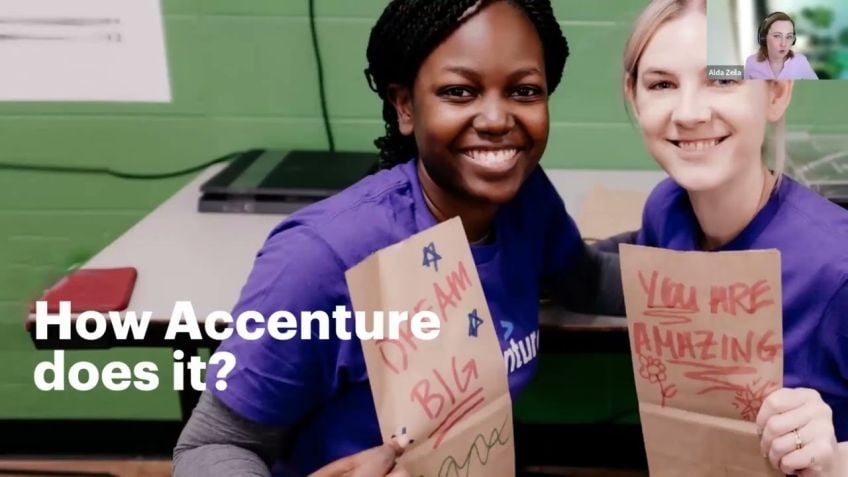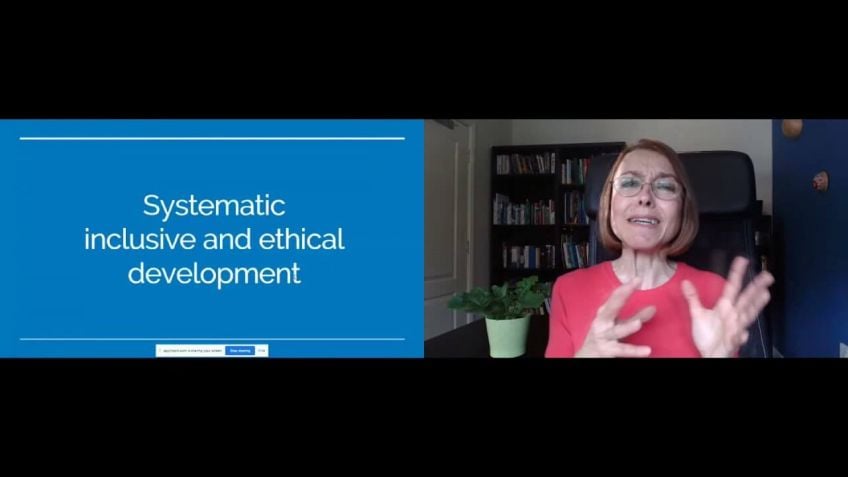Leading 5 Generations in the workplace
Janet Fouts
CEOUnderstanding and Managing Age Diversity in the Tech Industry
In today's digital era, there is no doubt that the age demographic within tech companies has seen significant changes. While in the early to mid-nineties, only around 3% of the American workforce was over the age of 65, recent data indicates that this percentage has now more than doubled to 8%. Furthermore, in a vibrant tech industry that sees workers ranging from 18 to 75 and beyond, it's becoming increasingly crucial to understand and manage age diversity effectively.
The Significance of Age Diversity
Understanding age diversity and managing it well can be a significant asset within any tech company. It is essential to recognize that all generations have unique traits, expectations, and past experiences influencing their work ethics. Different generations also have contrasting views and approaches to resolving their work-related challenges or co-existing in a workplace environment, which can lead to misunderstandings if not properly addressed. For managers and leaders in tech companies, understanding these differences is key.
Simply put, understanding and managing age diversity is about recognizing the value of different perspectives and leveraging the strengths of all generations effectively.
The Challenges Of Age Diversity
- Different belief systems and ways of thinking based on generational differences can cause misunderstandings.
- Older generations might view younger ones as entitled, while younger employees might perceive their older colleagues as resistant to change.
- Intergenerational issues become more visible and complex as young workers enter positions of power, and experienced professionals choose to stay longer in the workforce.
Facing the Challenges – Creating an Inclusive Culture
Addressing these intergenerational issues requires proactive effort. Adopting a 'servant leader' approach can be beneficial in creating an inclusive culture that respects and values all generations. This strategy involves being open to understanding different perspectives, learning about diverse values, communication styles, and work ethics.
What's more, it includes facilitating effective communication and ensuring that everyone feels valued, thereby helping the company as a whole to run more smoothly and efficiently.
Key Strategies to Manage Age Diversity
- Create an open and inclusive environment where employees of all ages feel comfortable sharing their thoughts and ideas.
- Implement a culture of mentorship that helps bridge communication gaps and foster a sense of camaraderie.
- Celebrate diversity and inclusion, focusing not only on gender or ethnic diversity but also respecting and acknowledging age diversity.
Understanding the different perspectives and needs of the various generations can benefit not only in fostering open communication but also in creating a culture that supports success for all.
Conclusion
Despite the challenges, effectively managing age diversity can greatly enhance collaboration, creativity, and teamwork within any tech company. By acknowledging the value each generation brings and creating a welcoming and respectful environment, tech companies can pave the way towards a more harmonious, productive, and successful workplace.
Video Transcription
I'm Janet Faus Ceo of tattoo, digital media and nearly mindful here in Silicon Valley in the early mid nineties, when I started my first tech based company, less than 3% of America's workforce was over 65 which seemed pretty good at the time.But from that 3% now, we've gone to 8% of being over 65 and 2.6 million workers are 75 and older. Our statistics have changed a lot and the US Bureau of Labor Statistics estimates that women 75 and older will be in the workplace and that's gonna continue to grow by another 100% as opposed to 2016 to 2026. It's gonna double. So is there still ageism in tech? Yeah, of course, there is, is there sexism in tech undeniable? Which is why I'm here to talk to you about age diversity and managing your team working in a tech company when the age range can go from 18 to 75 and beyond. And let's think about this. We're teaching kids to write code as soon as they can think or calculate and people are also staying longer in the workforce. And why not the legacy knowledge that they have is so valuable. But we have to figure out how to effectively manage such a diverse group. And all this is to say that in today's workplace intergenerational issues are increasingly more visible as young workers enter positions of power and experienced professionals, they stay in the workforce.
All generations have very unique traits and expectations of what they want life to be like what they expect from their coworkers from the company. And remember that we all grew up in a different context. We grew up with different work ethics. We were raised differently and that wasn't just beliefs, belief systems or politics. But you know, we went from the kids in the fifties that were cherished. Then we went to the kids that were latchkey kids and learned how to handle their lives very, very early. And then there was a series of kids that were raised and really treasured again. And maybe that's why some young kids today don't want to learn how to drive a car because they can take an Uber. These are very different mindsets. I can tell you when I got my first car, it was my freedom. And I think that we kind of need to remember that there's a lot of differences in how we were raised, our belief systems and the ways that we were trained in our work. These things cause a lot of misunderstandings. That's a challenge for managers until they understand where people are coming from what their expectations are. And then we as servant leaders have to adapt to the needs of this multigenerational workforce cos you know what relationships matter, working with a good team in a good company that relies on relationships, sales, customer service, business development, getting funded, it all relies on relationships and in order for us to run smoothly and be more effective and to be happier that comes when we feel connected, valued, heard accepted.
So what do we have to lose if we don't decide that we're going to deal with this multigenerational issue? Well, we're gonna lose that legacy information. People are gonna quit. We know that people are quitting at a much higher rate lately because if we get dissatisfied, we don't have to stay anymore the way it used to be. Not even the old folks like me, that legacy information is precious and so is new information, new ideas, new approaches those differences in what one generation thinks as opposed to another. There's a balance that we need to figure out how to gold and treasure and remember that all positions are valid and at least in the person's mind who has that position, but it may not be recognized. And again, it's just important for us leaders to be aware of these challenges and to actively work to address the challenges through effective communication training and also through creating an inclusive culture that values and leverages the strengths of all generations. You know, one of the biggest problems between generations at work simply lack of understanding and appreciation for the perspectives and contributions of people from other generations. If we don't relate to them and we don't get them, we fall into stereotypical thinking.
For example, all those older workers, they might see younger workers as entitled or lacking in work, work ethics, younger workers might see those older workers as outdated, resistant to change. And we all know there's many of these stereotypes and we know that these stereotypes are triggering and that's because they're not always true. Stereotypes ring true to us because it's easy. And so we kind of go with it. But remember that there are 75 year old experts in the field right now who were way ahead of the curve and they still are, they teach their younger coworkers, they do adapt to change and they do value the community of the workplace. And there's 18 year olds who are more comfortable. If they have a stable environment, they like to work independently. They love technology, but they also don't love technology. Sometimes they rather have a flip phone. See the thing is is that we're all still individuals, both ends of the spectrum, believe in the value of work life balance. Actually wanna have a life that's pretty cool. They wanna be happy, they wanna feel safe, that includes psychological safety, they wanna feel trusted, they wanna have variety. They wanna have choice in the work they do and who they work with that comes down to one thing and thats a sense of agency.
When we take that servant leader approach, we're more open to understanding different perspectives, being a little more open to listen, to pay attention to the needs of each generation. To take the time, make the effort to learn about the values, communication styles, work ethics of the individuals that we manage so that we can help them to communicate more effectively, create an inclusive environment where everybody feels valued. So why isn't this easy? Neuroscience tells us the human mind likes the familiar, the easy, the comfortable, but here we all are with our own perspectives on what we want. What's important to us, what the company wants, each of us have our own view of the world. So what are we gonna do about this? Create an open and inclusive environment where employees of all generations are comfortable sharing their thoughts and ideas, use this culture of mentorship to help bridge communication gaps, create a sense of camaraderie between team members, celebrate diversity and inclusion, create an inclusive culture by celebrating the diversity of the team members and the age diversity too overall.
By understanding the different perspectives and needs of the different generations. We're fostering open communication and a culture that helps us all succeed. Managers can effectively manage multiple generations and improve collaboration, creativity and teamwork. Thank you.



